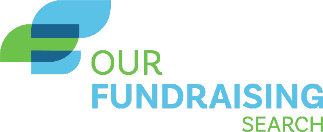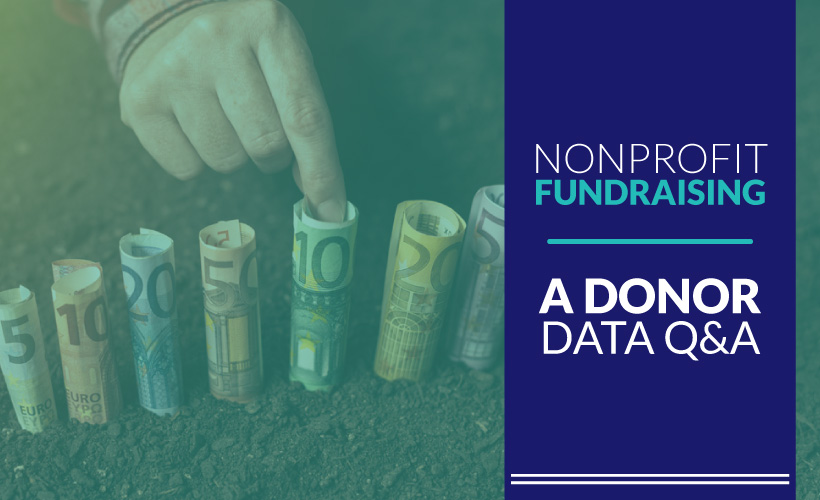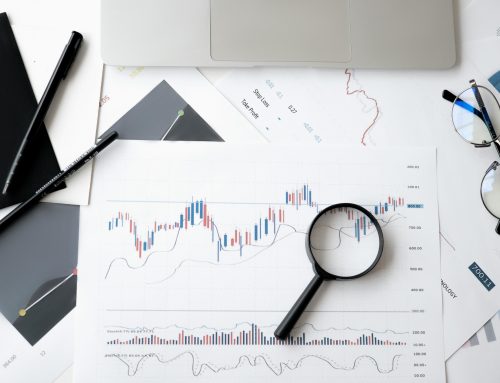The nonprofit fundraising world can be difficult to navigate. With new fundraising tech and modern ways to reach donors, it gets harder and harder to keep up with all the innovation. That’s why many people turn to fundraising consultants like Our Fundraising Search to assist them during campaigns to engage donors and ensure long term impact on their cause.
However, throughout all the new trends, there’s always value in collecting relevant donor data. The better you understand your current donors and supporters, the better you can communicate and engage with them.
Even if you think you know your donors well enough, it’s always a good idea to review your current processes and determine if you need to revamp your fundraising strategy. Consider how you collect donor data and if your software solution is doing all it can do to leverage that data and increase fundraising. Some tools are even taking advantage of artificial intelligence and machine learning to streamline the donor research process.
Taking the time to garner insights from your donor data is a method that can supplement any fundraising campaign. Whether you’re new to fundraising or you’re a seasoned veteran, make sure you’re taking advantage of all your donor data opportunities. In this guide you’ll be reviewing the following questions:
- How can I effectively track donor data?
- How can I use donor data to increase fundraising?
- What are some donor data best practices?
Don’t let your fundraising efforts fall to the wayside by not leveraging all the opportunities you can. Start effectively collecting donor data and improve those donor relationships now! Let’s get started.

1. How can I effectively track donor data?
The more your donor base grows, the harder it gets to keep track of them all. Nonprofits and other charitable organizations rely on fundraising software to manage the processes and engagements that come with fundraising. For instance, most nonprofits invest in a capable online donation tool that helps them collect monetary gifts online and store that data in their CRM.
Constituent relationship management (CRM) systems, also known as your donor database, are usually where nonprofits will keep important information and engagement metrics on each of their donors.
From there, you can further expand your fundraising toolkit with a prospect research tool.
Prospect Research
Prospect research is a method that nonprofits use to better identify high impact donors. What does this mean? Well, to put it simply, prospect research takes your donor database and screens each profile against specific metrics and personal traits. These indicators are then used to make an educated assumption about how that donor will engage with your nonprofit in the future.
Though this is possible to do manually, experienced nonprofit leaders know to use a capable prospect research tool. This tool will screen their donors against its established and trusted prospect research databases. Usually, the tool is screening for these data points:
- Wealth markers. This includes your donor’s real estate ownership, stock ownership, and business affiliations. This gives you a sense of a donor’s ability to give. The more wealth markers they have, the higher the chance that they will donate a meaningful amount.
- Philanthropic indicators. This includes looking at your donor’s past giving, political giving history, and other nonprofit involvement. Metrics like this help you determine a donor’s affinity to give, or the likelihood that the donor would even make a charitable donation.
Your prospect research tools will highlight the donors with a high giving affinity and giving ability, helping you identify those who are most likely to become major donors. Continue reading to learn more about this and other ways that using prospect research can increase fundraising.

2. How can I use donor data to raise fundraising?
As mentioned before, prospect research is used to help nonprofits pinpoint high impact donors. The most common reason that nonprofits take advantage of prospect research is to help identify potential major donors.
Why is this so important? For one thing, every fundraiser should know that major donors are some of the most important people to your nonprofit. Major gifts make up a huge portion of your yearly fundraising. One study that collected data from over 7,000 charities showed that 76% of contributions came from only 4% of donors.
With your prospect research tool, you can identify these major donors and develop those relationships early on. People don’t just make major donations because they have the funds and a charitable history. You need to focus your marketing and engagement efforts on these donors in order to curate a relationship that leads the way to future giving.
Although major gifts are usually what nonprofits are aiming for when they turn to prospect research, there are other fundraising campaigns that your prospect research data can supplement. Here are some of them:
Increasing matching gift revenue.
According to Double the Donation, corporate matching gift programs are a huge revenue opportunity that not every nonprofit is taking advantage of, mostly due to the fact that many donors don’t even realize that they might be eligible. An estimated $4-$7 billion in matching gift funds go unclaimed each year. If your donors are eligible, you can possibly double, or even triple, already made donations!
Using your prospect research tools, screen your donors’ business affiliations and get a better understanding of which ones are matching gift eligible. Then, send out matching gift communications to get the process started.
Finding donor advised funds (DAFs).
DAFs are one of the fastest-growing forms of philanthropy today. This is when an individual deposits cash, stock, or other assets into a savings account specifically made for charitable giving. The recipient for this fund is not chosen until later on. This is an exciting opportunity for nonprofits, as this money is already being saved for charitable giving.
However, to be chosen for a DAF recipient, you need to actively work and develop relationships with those donors. Taking advice from this DonorSearch flash class webinar, use your prospect research tool to find which of your current donors might contribute to a DAF.
Identifying possible planned gifts.
Similar to major gifts, planned gifts also make up a large portion of a nonprofit’s revenue. Planned gifts are donations that donors intend to make at a later date. These usually are planned for when the donor has passed away. This is a huge decision for anyone to make, so it’s important you guide a supporter through the process.
Planned gifts shouldn’t be something you’re necessarily seeking out, but there are ways you can identify those who are likely to send a planned gift. Use your prospect research tool to screen for key traits like donor loyalty.
Using key donor data can help you establish and expand on various fundraising initiatives and goals. The better you know your donors, the better you can develop those relationships. Each donor is different, so the way you engage with them should be different as well. Segment your donors based on your prospect research, and send them the appropriate fundraising letter. For a generous resource of fundraising templates, check this out.

3. What are some donor data best practices?
As you’re collecting your donor data, there are a couple of things to keep in mind to best manage a growing database and make the most of what you’ve learned. Use your donor data to create more targeted engagements and fundraising efforts to develop better relationships.
It can be scary developing relationships with your high impact prospects. Don’t risk a relationship with lack of forethought. Consider the following donor data best practices to maximize fundraising success:
- Clean up your donor database. Ensure your donor database is accurate and organized. This way, you don’t accidentally start off donor communications by calling them by the wrong name. A common problem is having double entries for a single donor profile. Use a CRM system that is integrated with your other fundraising tools, ensuring that your data is centralized and optimized.
- Segment your donor communications. Put in extra effort to send targeted communications to your high impact donors. For one thing, no one wants irrelevant emails filling up their inboxes. These are more delicate relationships and should be developed with care. Only send matching gift letters to your matching gift eligible donors and so on.
- Send out donation appreciation letters. If your high impact prospects do end up making a gift, ensure that you show your donor appreciation. These people are more than just constituents of your organization, they are the reason why you are able to make any impact for your mission. Make sure to include personal details in your letters, or even send a physical token of appreciation.
As you’re reviewing your donor data, don’t let your efforts go to waste by not putting in enough care. Make sure your data is accurate, your communications are targeted, and you always show your appreciation.
It can be overwhelming to revamp your fundraising campaigns for the new year. Understanding your donors and investing in prospect research is a great way to create the perfect foundation that can lead the way for high impact future giving. Good luck!
DonorSearch was founded in 2007 with one goal: to provide more accurate, more comprehensive, more actionable data to help nonprofits of all types achieve better fundraising and outreach results. Using information from dozens of databases, DonorSearch uses proprietary algorithms to help clients find the best philanthropic prospects. Come see why thousands of nonprofit organizations trust DonorSearch today.






Leave A Comment